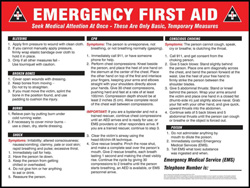| The Home page of ILPI's Safety Data Sheet (SDS) Resource, the leader in SDS information since 1995! | |
| The history and philosophy behind this resource. | |
| A curated collection of books and reference materials concerning Safety Data Sheets and closely related topics. | |
| Paste your plain text SDS into the SDS-Demystifier, and it will be converted into a hypertext-enriched document with links to detailed explanations of each key term. | |
| An extensive list of frequently asked questions about Safety Data Sheets including regulations, content, compliance, and more. | |
| A humorous take on Safety Data Sheet jargon. Fill in the blanks on our entry form to generate a personalized Unsafety Data Sheet to share with your coworkers. | |
| Since 1995, we've maintained this massive curated list of the best places to find Safety Data Sheets on the Internet. | |
| You are here! Way more than a glossary, this hypertext-enhanced resource covers hundreds of SDS-related terms and expert knowledge. Each entry includes both the SDS relevance and links to additional authoritative resources. | |
| Archived results of Safety Data Sheet related polls taken by some of our millions of site visitors | |
| The OSHA regulations behind SDS regulations, including the inspection guidelines and over 400 official interpretations letters under the Hazard Communication Standard | |
| Commercial suppliers of SDS authoring and management software as well as cloud compliance services. | |
| Commercial companies that will create SDS's for your specific needs as well as SDS translation companies. |

Safety signs, banners, and scoreboards? Get yours at Safety Emporium!
Definition
Dyspnea is shortness of breath or difficulty in breathing. The victim is usually quite aware of the unusual breathing pattern.
SDS Relevance
Shortness of breath can be an indicator of many physical ailments including simple exertion, a panic attack, a blow to the chest, asthma, cardiac disease, emphysema, as well as exposure to toxic chemicals. The wide variety of possible causes highlights why one should always read the Safety Data Sheet for a material before working with it. That way, you can be on guard for known symptoms of exposure.
Section 11 (toxicological information) of the SDS will mention if dyspnea is a known symptom or hazard. The term may also appear in Section 4 (first-aid measures).
If a person is suffering from shortness of breath, evaluate them for additional symptoms and possible exposures. Keep the victim in a sitting position. Remove the victim to fresh air if possible and seek medical attention.
Further Reading

We have all kinds of first aid signs, posters and labels at Safety Emporium.
- Diagnostic Evaluation of Dyspnea at the American Academy of Family Physicians. Comprehensive and includes a handy table of clues to conditions that cause dyspnea.
- Dyspnea (Shortness of Breath) at WebMD.com.
- Dyspnea at Merck Manual's Professional Version.
- Dyspnea symptom management at the Go2 Foundation for Lung Cancer.
- Rescue squad guidelines for responding to cases of dyspnea.
- Dyspnea Causes at Family Practice Notebook.
See also: asthma, bronchitis, emphysema.